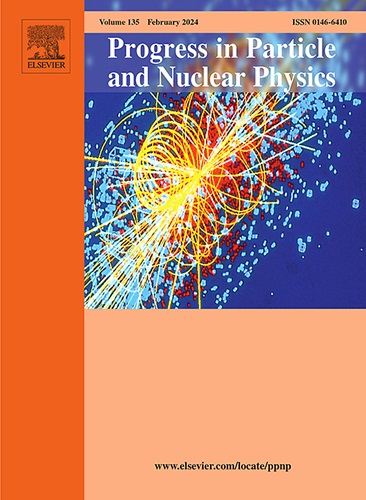From density response to energy functionals and back: An ab initio perspective on matter under extreme conditions
IF 17.9
2区 物理与天体物理
Q1 PHYSICS, NUCLEAR
引用次数: 0
Abstract
Energy functionals serve as the basis for different models and methods in quantum and classical many-particle physics. Arguably, one of the most successful and widely used approaches in material science at both ambient and extreme conditions is density functional theory (DFT). Various flavors of DFT methods are being actively used to study material properties at extreme conditions, such as in warm dense matter, dense plasmas, and nuclear physics applications. In this review, we focus on the warm dense matter regime, which occurs in the core of giant planets and stellar atmospheres, and as a transient state in inertial confinement fusion experiments. We discuss the connection between linear density response functions and free energy functionals as well as the utility of the linear response formalism for the construction of advanced functionals. As a new result, we derive the stiffness theorem linking the change in the intrinsic free energy to the density response properties of electrons. We review and summarize recent works that assess various exchange–correlation (XC) functionals for an inhomogeneous electron gas that is perturbed by a harmonic external field and for warm dense hydrogen using exact path integral quantum Monte Carlo data as an unassailable benchmark. This constitutes a valuable guide for selecting an appropriate XC functional for DFT calculations in the context of investigating the inhomogeneous electronic structure of warm dense matter. We stress that correctly simulating the strongly perturbed electron gas necessitates the correct UEG limit of the XC and non-interacting free-energy functionals.
从密度响应到能量函数,再回到密度响应:从ab initio角度看极端条件下的物质
能量函数是量子和经典多粒子物理学中不同模型和方法的基础。可以说,密度泛函理论(DFT)是在常温和极端条件下材料科学领域最成功和最广泛应用的方法之一。各种形式的密度泛函理论方法正被积极用于研究极端条件下的材料特性,如温致密物质、致密等离子体和核物理应用。在这篇综述中,我们将重点讨论发生在巨行星内核和恒星大气中的暖致密物质体系,以及惯性约束聚变实验中的瞬态。我们讨论了线性密度响应函数和自由能函数之间的联系,以及线性响应形式主义在构建高级函数方面的实用性。作为一项新成果,我们推导出了将本征自由能变化与电子密度响应特性联系起来的刚度定理。我们回顾并总结了最近的研究成果,这些成果以精确路径积分量子蒙特卡洛数据为无可辩驳的基准,评估了针对受谐波外场扰动的非均质电子气体和暖致密氢的各种交换相关(XC)函数。这对于在研究暖致密物质的非均质电子结构时为 DFT 计算选择合适的 XC 函数提供了宝贵的指导。我们强调,要正确模拟强扰动电子气,就必须正确使用 XC 和非相互作用自由能函数的 UEG 极限。
本文章由计算机程序翻译,如有差异,请以英文原文为准。
求助全文
约1分钟内获得全文
求助全文
来源期刊

Progress in Particle and Nuclear Physics
物理-物理:核物理
CiteScore
24.50
自引率
3.10%
发文量
41
审稿时长
72 days
期刊介绍:
Taking the format of four issues per year, the journal Progress in Particle and Nuclear Physics aims to discuss new developments in the field at a level suitable for the general nuclear and particle physicist and, in greater technical depth, to explore the most important advances in these areas. Most of the articles will be in one of the fields of nuclear physics, hadron physics, heavy ion physics, particle physics, as well as astrophysics and cosmology. A particular effort is made to treat topics of an interface type for which both particle and nuclear physics are important. Related topics such as detector physics, accelerator physics or the application of nuclear physics in the medical and archaeological fields will also be treated from time to time.
 求助内容:
求助内容: 应助结果提醒方式:
应助结果提醒方式:


